

Cool Tones, 1976
Oil, paraffin, and pure pigment powders on canvas
54 x 54 inches
Signed, titled, and dated on the verso

Warm Tones, 1976
Oil, paraffin, and pure pigment powders on canvas
54 x 48 inches
Signed, titled, and dated on the verso
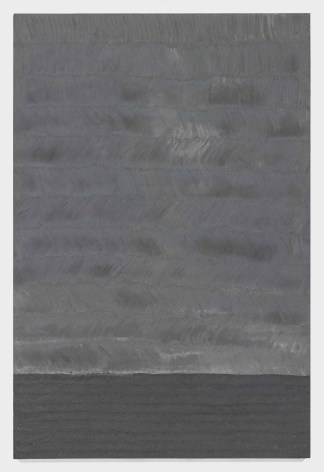
Grey Veil, 1978
Beeswax, damar resin crystals, and pure pigment powders on canvas stretched over masonite
72 x 48 inches
Signed, titled, and dated on the verso
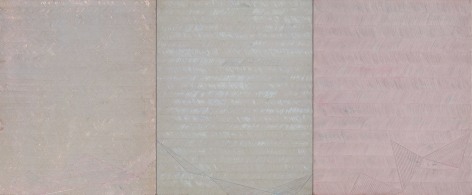
1980-569 (triptych), 1980
Beeswax, damar resin crystals, and pure pigment powders on canvas over masonite
60 x 48 inches, each
60 x 144 inches, overall
Each panel is signed, titled, and dated on the verso
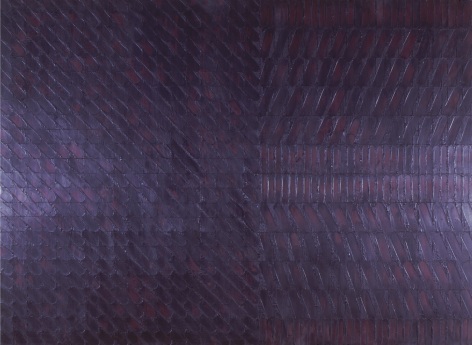
Garnet, 1983
Beeswax on masonite
48 x 66 inches
Signed, titled, and dated on the verso
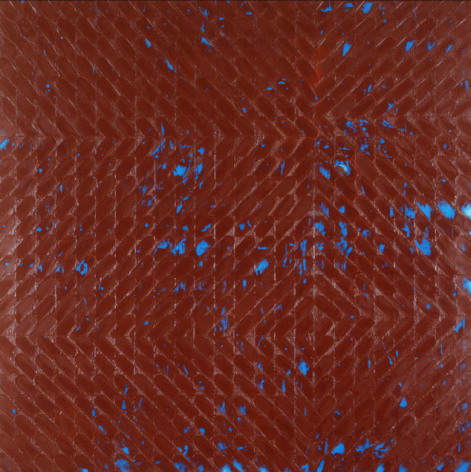
Navajo, 1984
Beeswax on canvas stretched over masonite
48 x 48 inches
Signed, titled, and dated on the verso
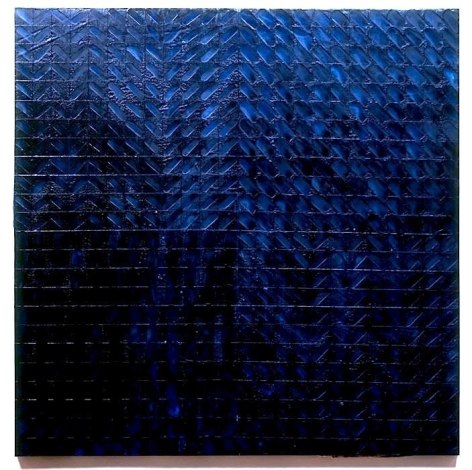
Twilight, 1986-87
Beeswax and pure pigment powders on canvas stretched over masonite
48 x 48 inches
Signed, titled, and dated on the verso
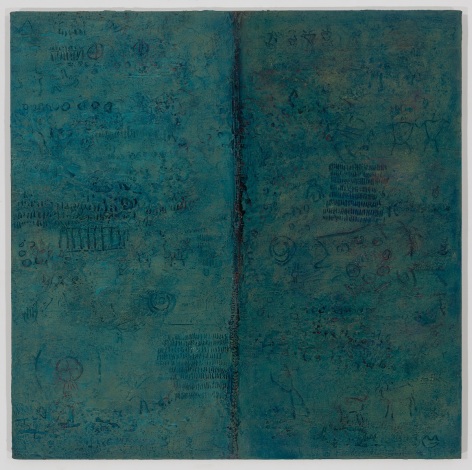
Symbols Before My Eyes, 1996
Acrylic paint and paste on canvas
36 x 36 inches
Signed, titled, and dated on the verso
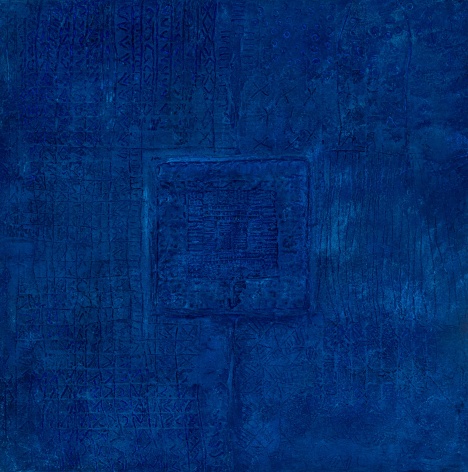
Patrician Blue, 1999
Acrylic paint and paste on Honeycomb Fiberglass panel
32 x 32 inches
Signed, titled, and dated on the verso
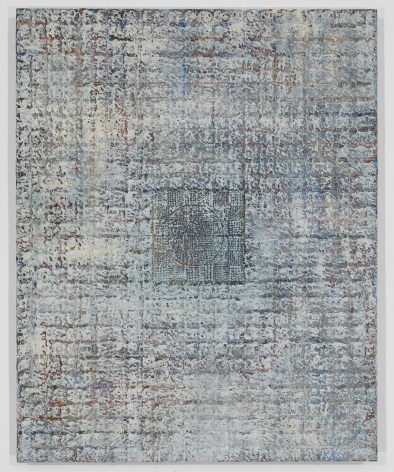
Collective Sorrow, 2002
Acrylic paint and paste on panel
30 x 24 inches
Signed, titled, and dated on the verso
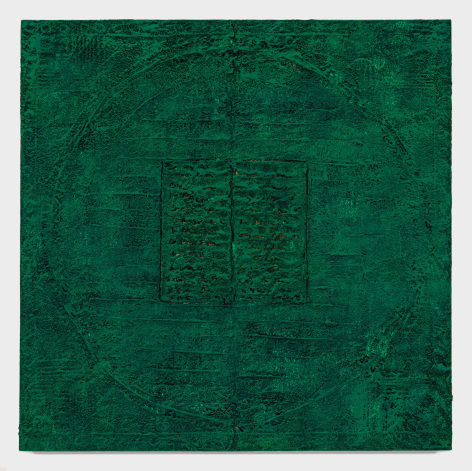
A Free Fall From Grace, 2004
Acrylic paint and paste on panel
24 x 24 inches
Signed, titled, and dated on the verso
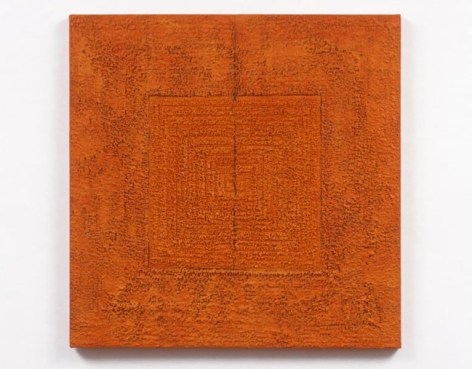
MMS-2, 2005
Acrylic on canvas
42 x 42 inches
Signed, titled, and dated on the verso
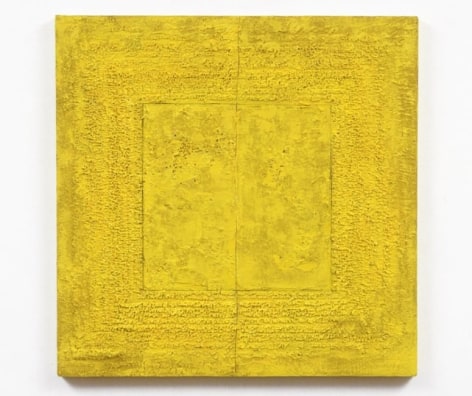
MMS-1, 2004
Acrylic on canvas
42 x 42 inches
Signed, titled, and dated on the verso
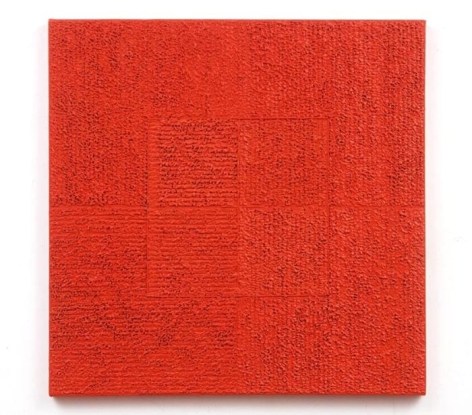
RO, 2005
Acrylic on canvas
42 x 42 inches
Signed, titled, and dated on the verso

Hot House, 2013
Acrylic paint and paste on aluminum panel
56 x 48 inches
Signed, titled, and dated on the verso
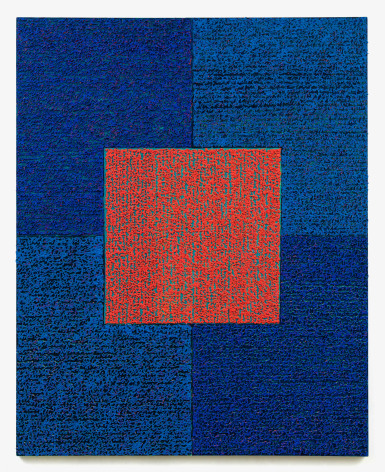
Blue BLUE CRL, 2012
Acrylic paint and paste on canvas
60 x 48 inches
Signed, titled, and dated on the verso
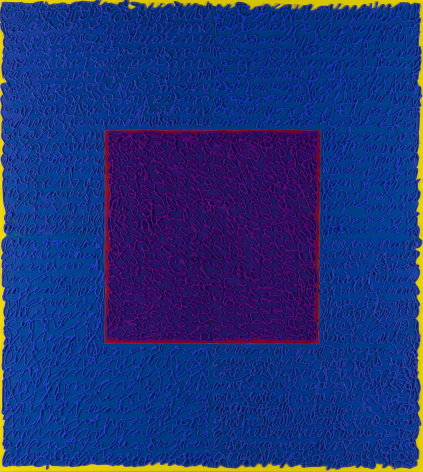
Mystic Garden, 2018
Acrylic paint and paste on linen
40 x 36 inches
Signed, titled, and dated on the verso
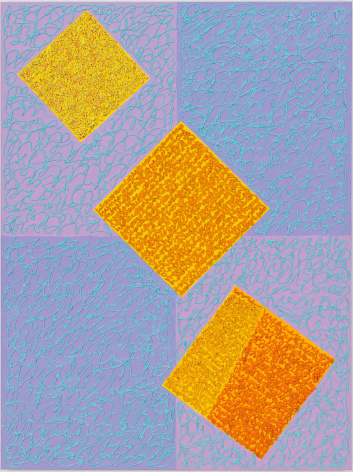
Ascension, 2022
Acrylic paint and paste on linen
40 x 30 inches
Signed, titled, and dated on the verso
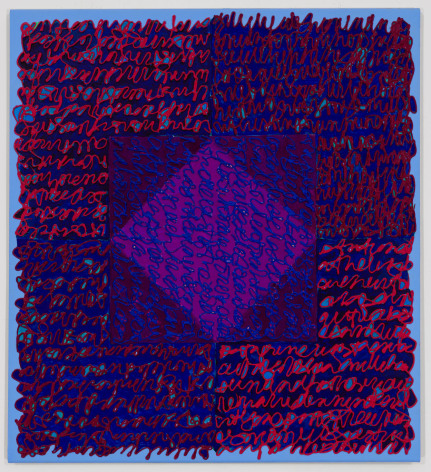
Vixen, 2019
Acrylic paint and paste on linen
26 x 24 inches
Signed, titled, and dated on the verso
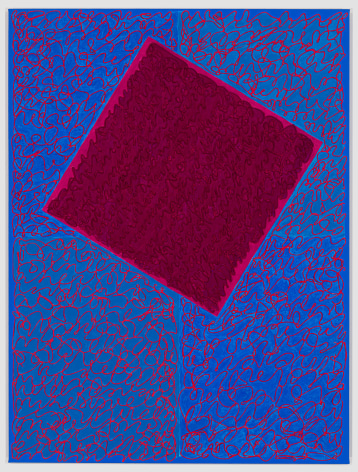
Violet Rising, 2020
Acrylic paint and paste on linen
40 x 30 3/4 inches
Signed, titled, and dated on the verso
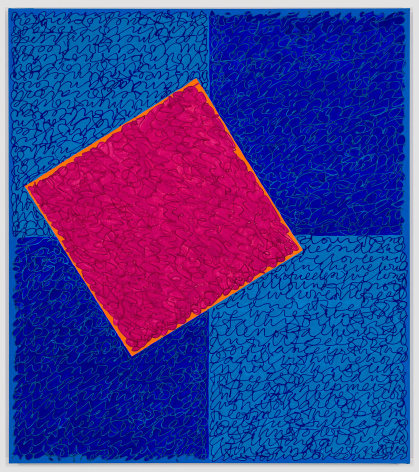
Venus Rising, 2020
Acrylic paint and paste on linen
50 x 44 inches
Signed, titled, and dated on the verso
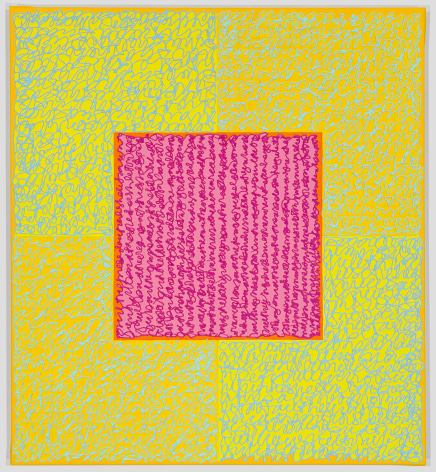
The Lightness of Being, 2019
Acrylic paint and paste on linen
44 x 40 inches
Signed, titled, and dated on the verso
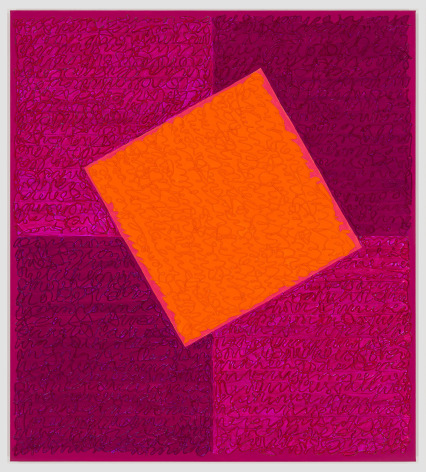
Orange Rising, 2019
Acrylic paint and paste on linen
40 x 36 inches
Signed, titled, and dated on the verso
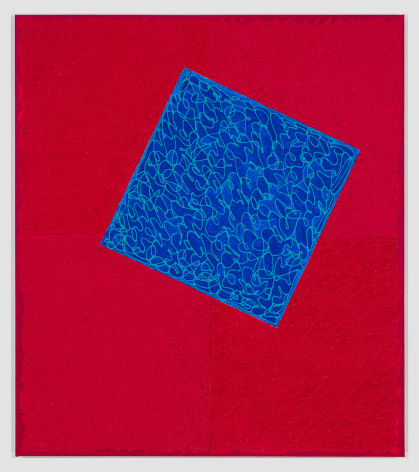
Neptune Rising, 2020
Acrylic paint and paste on linen
50 x 44 inches
Signed, titled, and dated on the verso
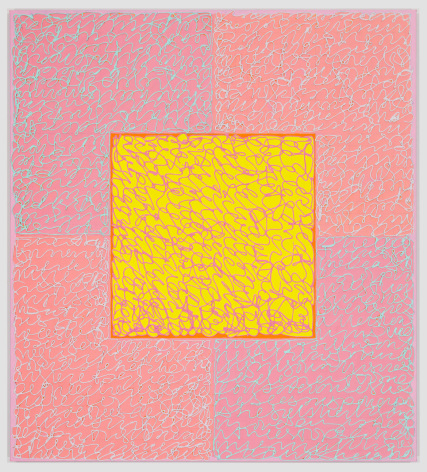
Into the Light, 2019
Acrylic paint and paste on linen
40 x 36 inches
Signed, titled, and dated on the verso
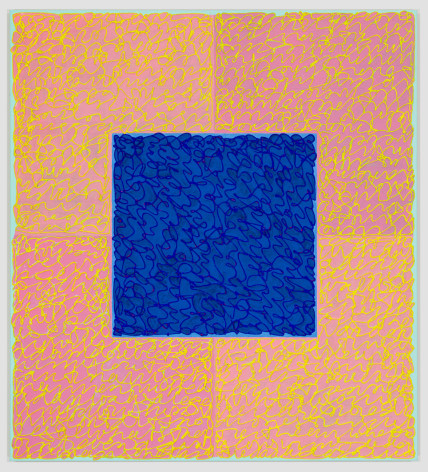
Blue Center, 2019
Acrylic paint and paste on linen
40 x 36 inches
Signed, titled, and dated on the verso
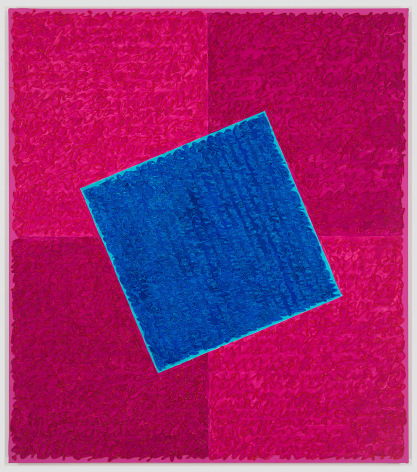
Beyond the Horizon, 2019
Acrylic paint and paste on linen
50 x 44 inches
Signed, titled, and dated on the verso
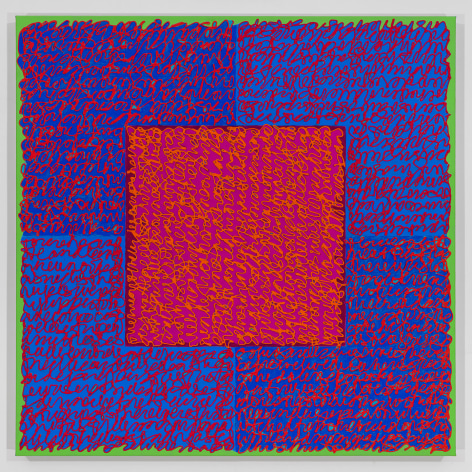
Burner, 2018
Acrylic paint and paste on linen
36 x 36 inches
Signed, titled, and dated on the verso
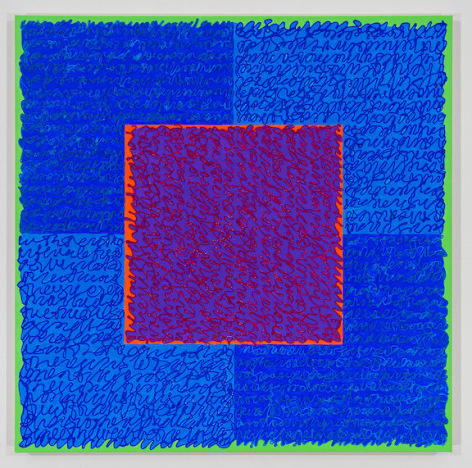
Ring of Fire, 2018
Acrylic paint and paste on linen
36 x 36 inches
Signed, titled, and dated on the verso
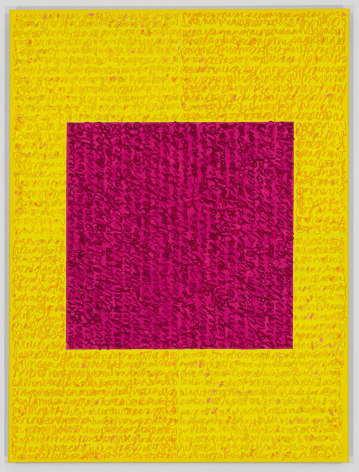
Celeste, 2018
Acrylic paint and paste on linen
48 x 36 inches
Signed, titled, and dated on the verso

Mystic Garden, 2018
40 x 46 inches
Acrylic paint and pastes on linen
Signed, titled, and dated on the verso
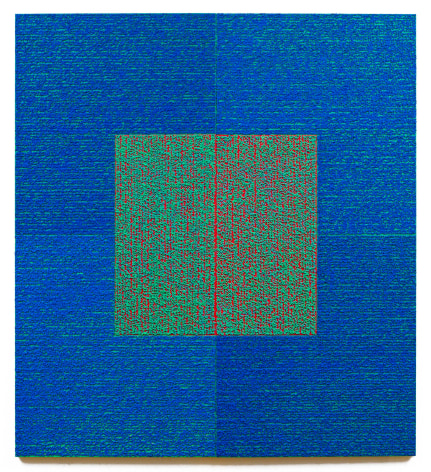
H Blues, 2017
Acrylic paint and paste on wood panels
80 x 72 inches
Signed, titled, and dated on the verso
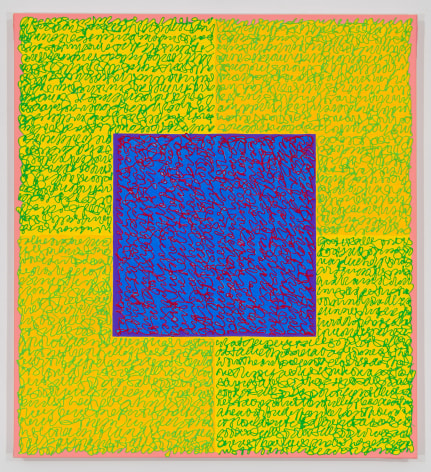
It's All Good, 2018
44 x 40 inches
Acrylic paint and paste on linen
Signed, titled, and dated on the verso

Dangerzone, 2018
44 x 40 inches
Acrylic paint and paste on linen
Signed, titled, and dated on the verso
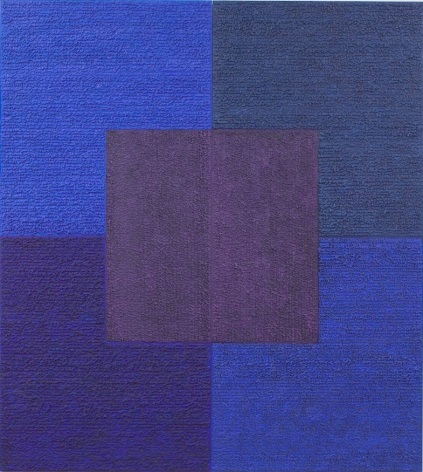
True Blue, 2005
Acrylic paint and paste on wood panel
80 x 72 inches
Signed, titled, and dated on the verso
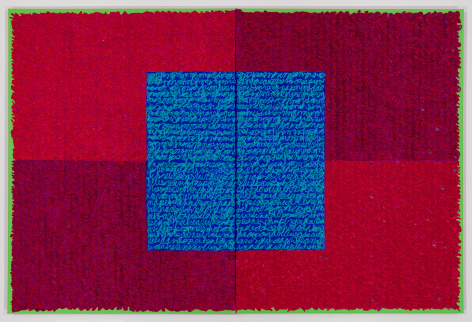
RRCT, 2018
Acrylic paint and paste on linen
48 x 72 inches
Signed, titled, and dated on the verso

Green Square With Reds, 2010
Acrylic paint and paste on aluminum panel
34 x 30 inches
Signed, titled, and dated on the verso
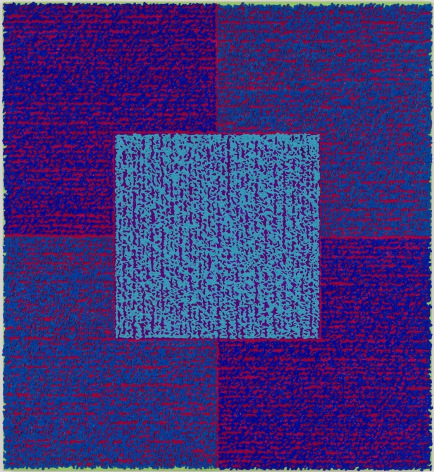
CCBAS, 2013
Acrylic paint and paste on aluminum panel
50 x 46 inches
Signed, titled, and dated on the verso

Labor Day, 2018
Acrylic paint and paste on linen
48 x 36 inches
Signed, titled, and dated on the verso
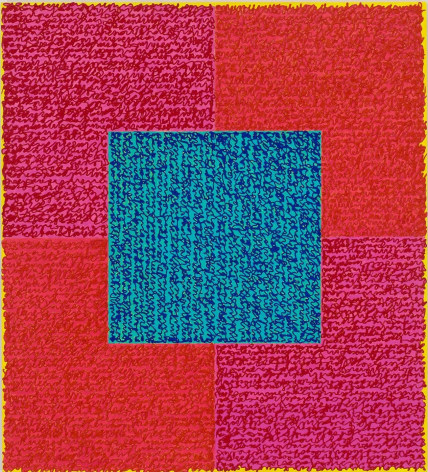
In the Pink, 2015
Acrylic paint and paste on aluminum panel
40 x 36 inches
Signed, titled, and dated on the verso

Fated 7, 2016
Acrylic paint and paste on aluminum panel
40 x 36 inches
Signed, titled, and dated on the verso
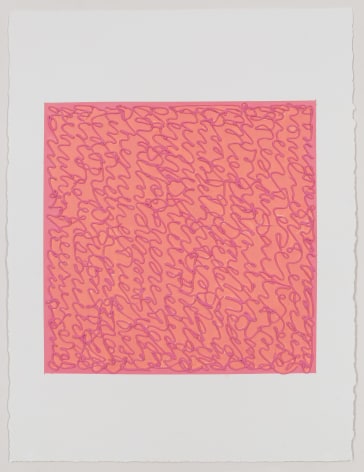
Pink Kiss, 2019
Acrylic paint and paste on Gessoed 400# Arches Cold Press Paper
30 x 22 inches
Signed, titled, and dated on the verso
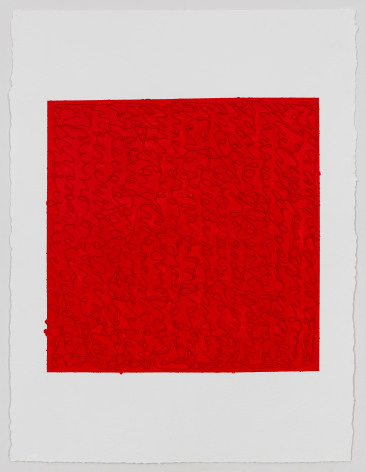
Reds, 2019
Acrylic paint and paste on Gessoed 400# Arches Cold Press Paper
30 x 22 inches
Signed, titled, and dated on the verso
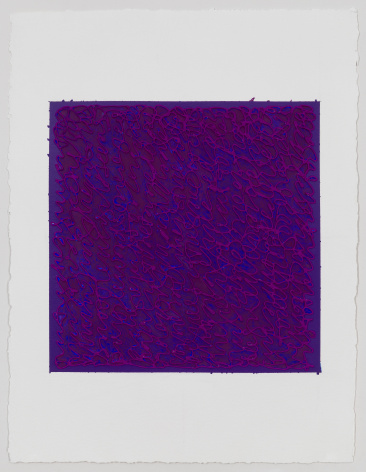
Violets, 2019
Acrylic paint and paste on Gessoed 400# Arches Cold Press Paper
30 x 22 inches
Signed, titled, and dated on the verso
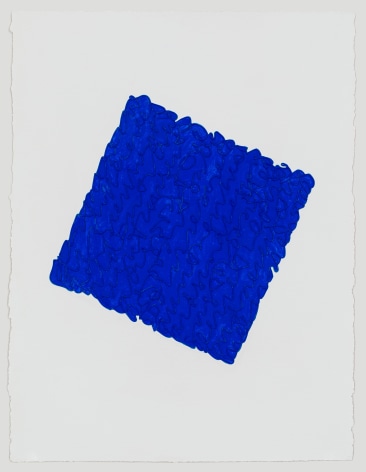
Ultra Blue Aussie, 2020
Acrylic paint and paste on Gessoed 400# Arches Cold Press Paper
30 x 22 inches
Signed, titled, and dated on the verso

QuinViolet 1, 2019
Acrylic paint and paste on Gessoed 400# Arches Cold Press Paper
30 x 22 inches
Signed, titled, and dated on the verso
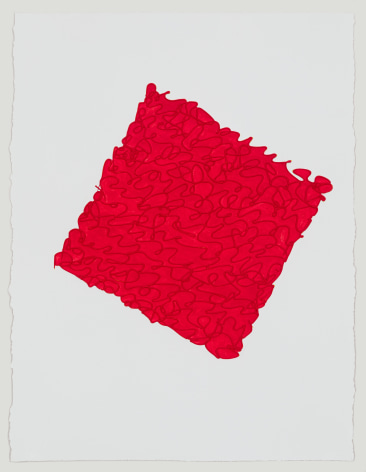
Pyrrole Red, 2019
Acrylic paint and paste on Gessoed 400# Arches Cold Press Paper
30 x 22 inches
Frame: 35 1/4 x 28 inches
Signed, titled, and dated on the verso
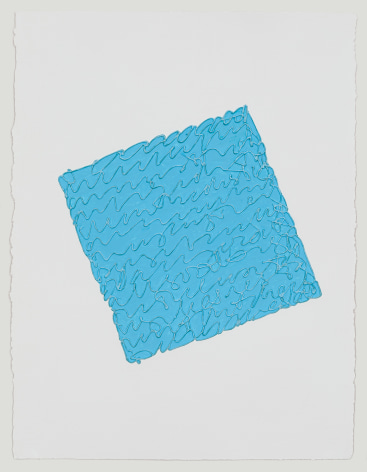
Ltpthalo Blue, 2019
Acrylic paint and paste on Gessoed 400# Arches Cold Press Paper
30 x 22 inches
Signed, titled, and dated on the verso
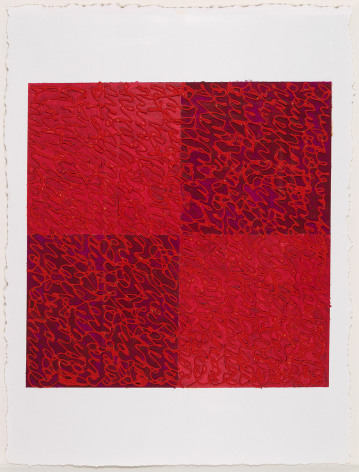
Reds 1, 2017
Acrylic paint and paste on Gessoed 400# Arches Cold Press Paper
30 x 22 inches
Signed, titled, and dated on the verso
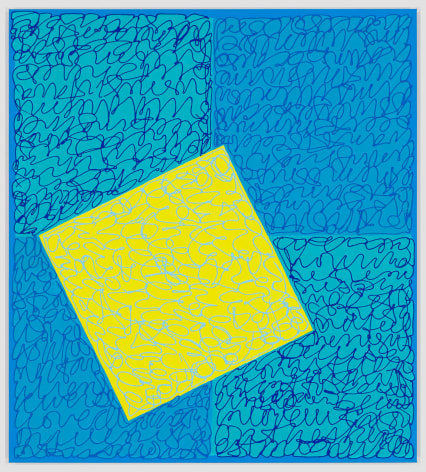
Honey Moon Rising, 2019
Acrylic paint and paste on linen
40 x 36 inches
Signed, titled, and dated on the verso
SOLD
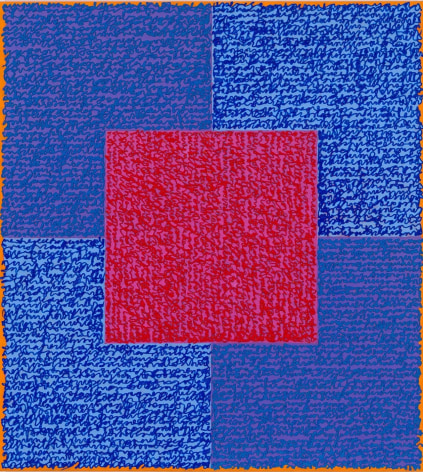
Blues, 2015
Acrylic paint and paste on aluminum panel
40 x 36 inches
Signed, titled, and dated on the verso
SOLD
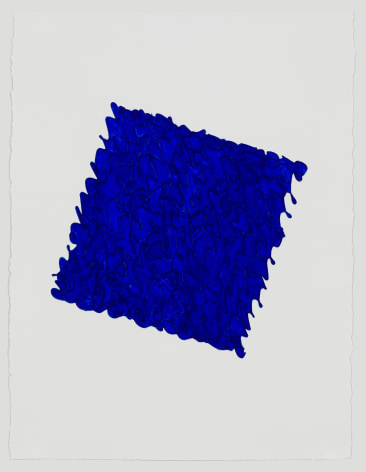
Golden Ultra Blue, 2019
Acrylic paint and paste on Gessoed 400# Arches Cold Press Paper
30 x 22 inches
Signed, titled, and dated on the verso
SOLD
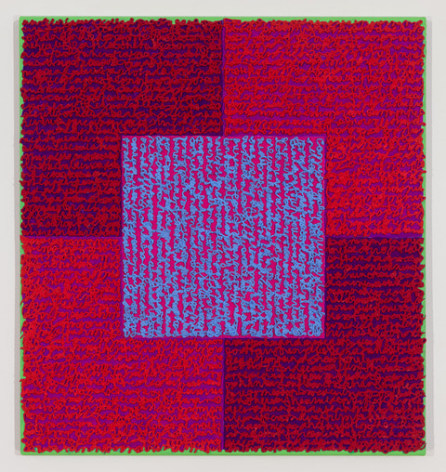
DRVBS, 2015
Acrylic paint and paste on aluminum panel
26 x 24 inches
Signed, titled, and dated on the verso
SOLD
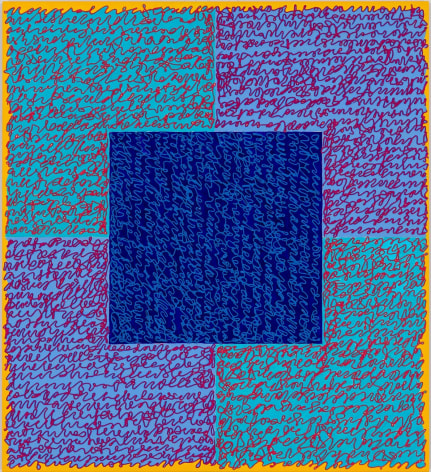
Fated 5, 2016
Acrylic paint and paste on aluminum panel
40 x 36 inches
Signed, titled, and dated on the verso
SOLD
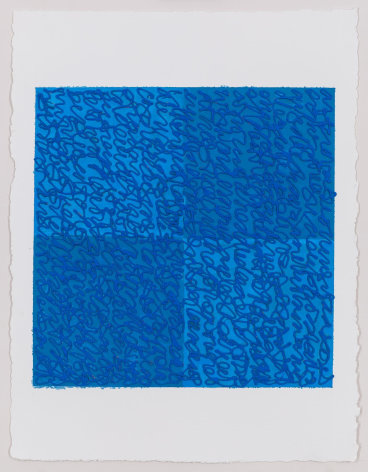
Blues 2, 2017
Acrylic paint and paste on Gessoed 400# Arches Cold Press Paper
30 x 22 inches
Signed, titled, and dated on the verso
SOLD
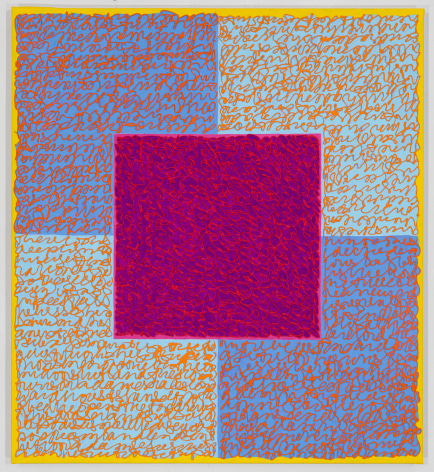
Default 1, 2019
Acrylic paint and paste on linen
44 x 40 inches
Signed, titled, and dated on the verso
SOLD

Violets Red, 2013
Acrylic paint on bent aluminum panel
56 x 48 inches
Signed, titled, and dated on the verso
SOLD
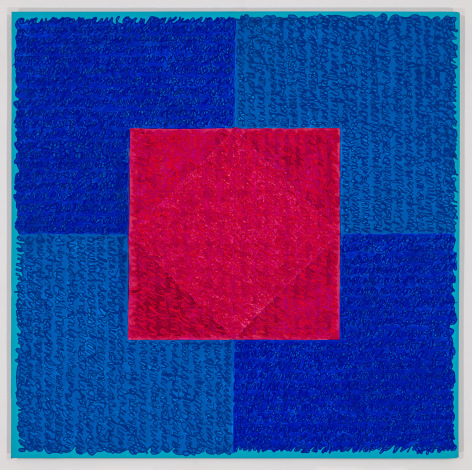
BB Red Square, 2018
Acrylic paint and paste on linen
42 x 42 inches
Signed, titled, and dated on the verso
SOLD
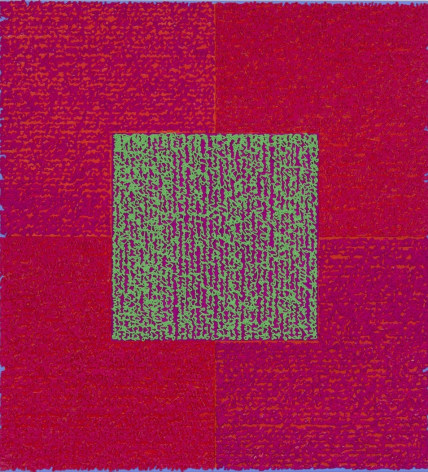
The Mighty Atom, 2014
Acrylic paint and paste on aluminum panel
50 x 46 inches
Signed, titled, and dated on the verso
SOLD
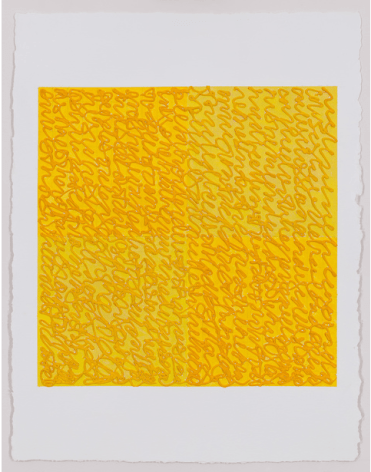
Yellows, 2017
Acrylic paint and paste on Gessoed 400# Arches Cold Press Paper
30 x 22 inches
Signed, titled, and dated on the verso
SOLD
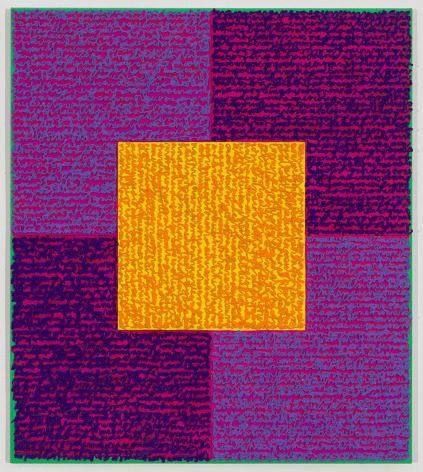
VVPPO, 2015
Acrylic paint and paste on aluminum panel
34 x 30 inches
Signed, titled, and dated on the verso
SOLD
Louise P. Sloane (b. 1952) has been active as an abstract painter since 1974, infusing her works with personal text that motivates her own experimentation. The visual language of her paintings continues the legacy of reductive and minimalist ideologies, while celebrating color and the human inclination towards mark making. Sloane’s detail-oriented works are typically divided into rectangles or squares. The quadrangle has become a repetitive motif, often centrally featured within the context of a grid. In contrast with her iterative geometries, it is important to Sloane that the works present themselves as human made objects. Thick paint constructs repetitive handmade patterns, the physical motion of her brush strokes revealing the humanity of her practice. The surface holds Sloane’s signature extrusions. Painstakingly written and overwritten, Sloane’s inscribed text is a form of private meditation. Turned into a relief, and abstracted through color blocking, the text is interpreted through its physicality, not its meaning. Contrasting color choices intensify the dimensionality of the surface texture. Sloane uses color straight-up, without mixing. Blending takes place optically, as one color reacts to the other, red against green, or blue against yellow. The elements of mark-making, color, and geometry compete for the viewer’s focus, keeping the eyes and mind in constant motion, unifying her interests in the form of the square.
Sloane’s work has been featured in numerous institutional collections, including the Hunterdon Museum of Art, Coral Springs Museum of Art, the Jane Voorhees Zimmerli Art Museum, and Cornell Museum of Art and History. Sloane’s works are in the permanent collections of the Heckscher Museum of Art, the New Britain Museum of American Art, the Nassau County Museum of Art, Yeshiva University Museum, the Southern Alleghenies Museum of Art, and the Virginia Museum of Fine Arts (the Sidney and Francis Lewis Collection).